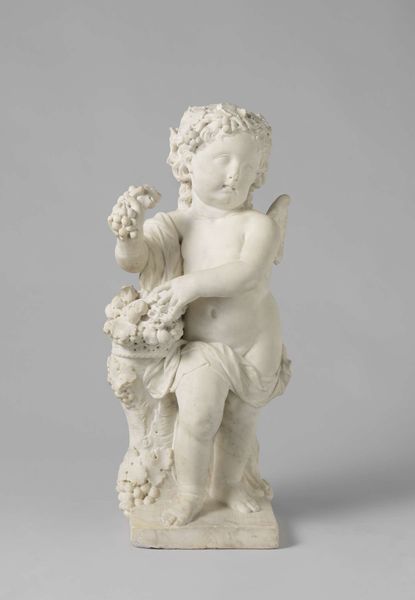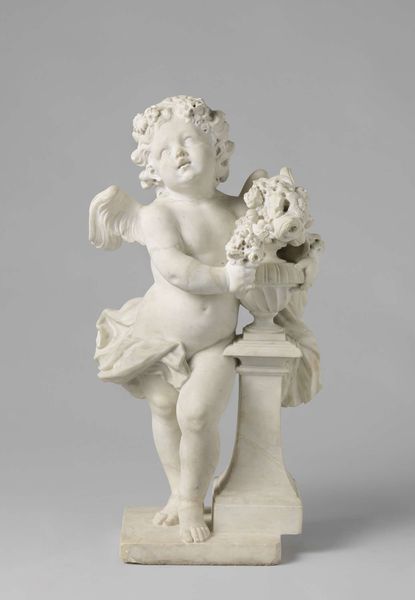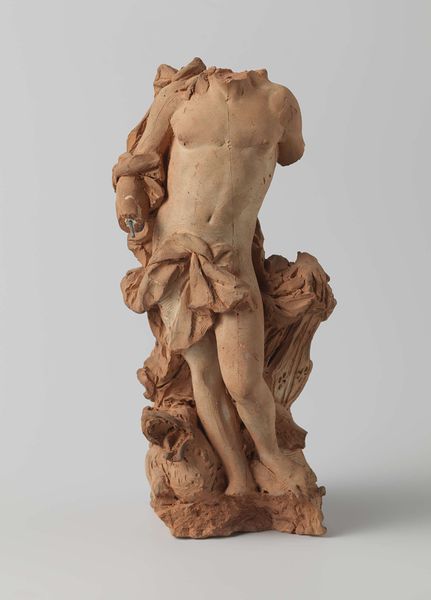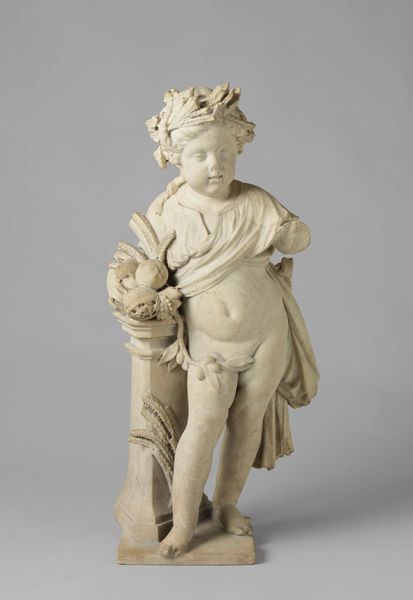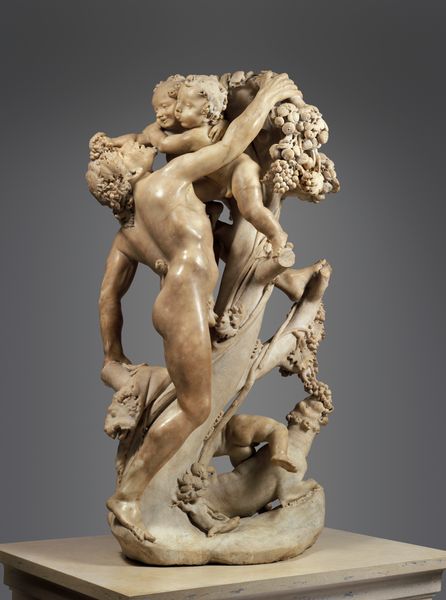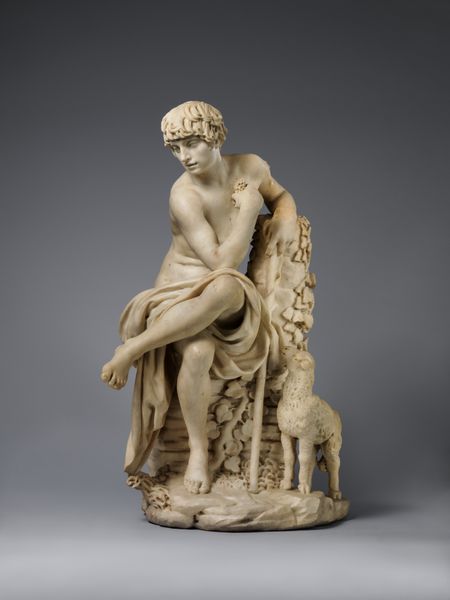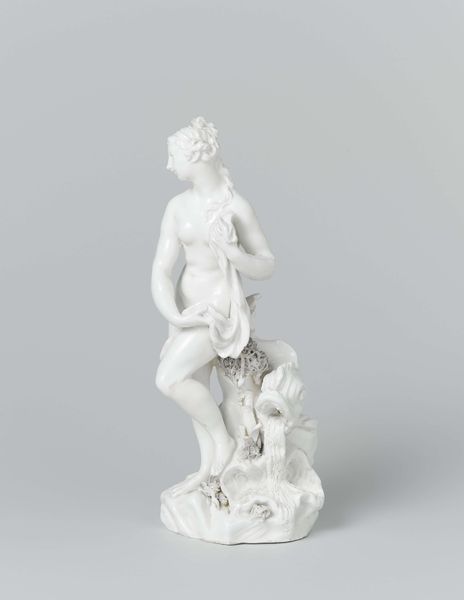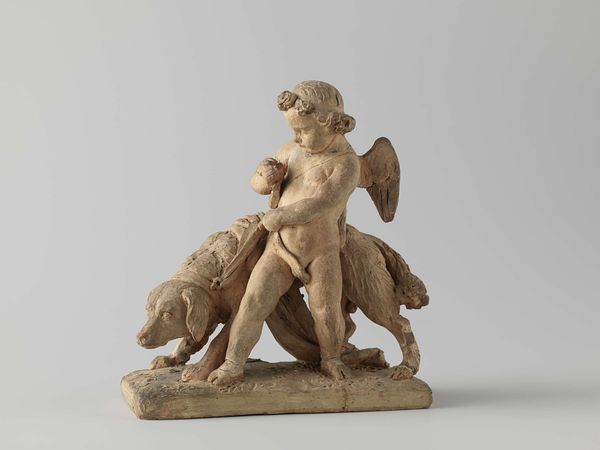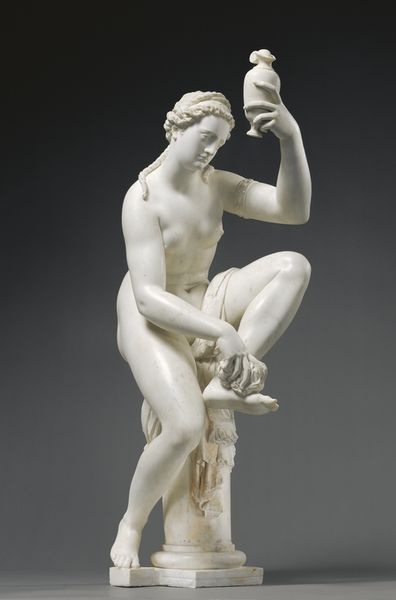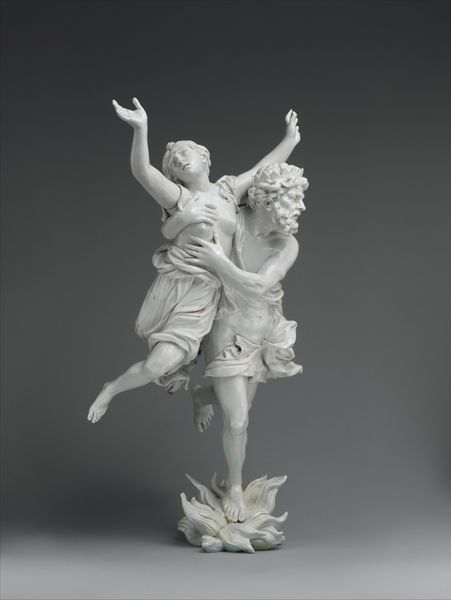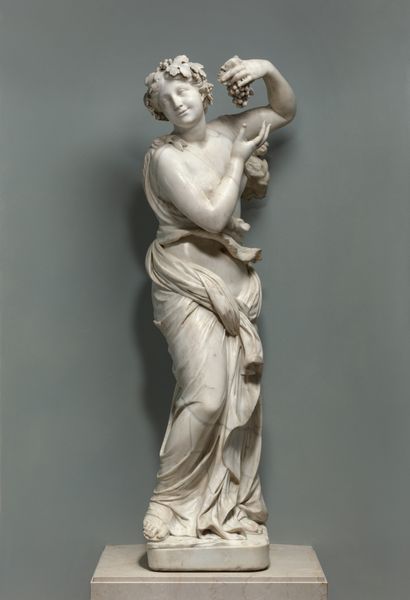
sculpture, marble
#
allegory
#
baroque
#
sculpture
#
landscape
#
figuration
#
sculpture
#
history-painting
#
marble
Dimensions: height 100.5 cm, width 50.0 cm, depth 43.0 cm, width 37.0 cm, depth 23.0 cm, weight 100 kg
Copyright: Rijks Museum: Open Domain
This is "Autumn, from a Series of the Four Seasons" by Artus Quellinus II. This sculpture presents a voluptuous figure, likely a putto, carved from a creamy stone, possibly marble, that speaks to classical ideals. The eye is drawn to the texture—the smooth skin of the figure contrasts with the dense clusters of grapes. Quellinus has masterfully played with the tension between organic forms and classical structure, creating a dynamic interplay between the ideal and the real. The putto embodies a semiotic symbol of abundance and fruition, characteristic of the season. Yet, this is not just a celebration of nature's bounty, but a commentary on form and the aesthetics of representation. Notice how the flowing lines of the figure contrast with the solid, geometric plinth. It’s this intersection that elevates "Autumn" from a mere seasonal depiction to an exploration of how form and content interact, inviting us to reconsider the layers of meaning embedded in the artwork.
Comments
No comments
Be the first to comment and join the conversation on the ultimate creative platform.
